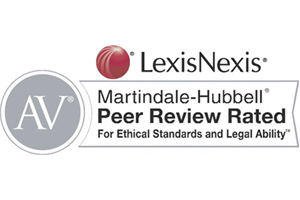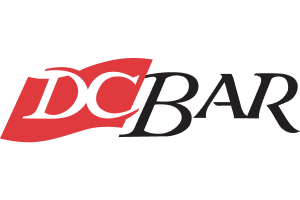Small Law Firm Care & Attention"
A Brief Imperative Blueprint for Legal Departments
The Legal Department: A Revenue Center, Not Just a Cost Center
I’d like to talk about a transformation, a shift in perspective that can revolutionize the way we view legal departments within organizations.
The Traditional View of Legal Departments
Traditionally, legal departments have been seen as cost centers, necessary for mitigating risks and ensuring compliance. But what if I told you that a legal department could be much more than that? What if it could be a revenue center, a powerhouse that drives an organization’s success?
The New Perspective
This new perspective was shaped by my mentor, the former founding General Counsel of Cargill, a global leader in the food and agriculture industry. Under their leadership, Cargill’s legal department transformed into an intellectual property powerhouse and a significant revenue center.
The Cargill Example
Cargill’s legal team didn’t just protect the company’s vast portfolio of patents, trademarks, and copyrights. They strategically leveraged these assets to generate significant revenue through licensing agreements, strategic partnerships, and enforcement actions against IP infringements.
The Role of the Chief Legal Officer
The Chief Legal Officer plays a crucial role in this transformation. They oversee the legal team, monitor progress, hold the team accountable, and motivate personnel to drive the success of the department and the company as a whole.
Balancing Quality and Cost
Just like the insurance industry balances coverage and cost, the CLO must balance the quality of legal services and their cost. This involves risk assessment, preventive measures, and strategic resource allocation.
Leveraging Technology
Technology can also drive efficiencies. Legal technology can help manage the work of outside counsel by providing secure AI tools for tracking time, managing documents, predicting “time and tasks” and communicating effectively.
So, how can a legal department become a revenue center? By aligning with the company’s goals, leveraging intellectual property rights, negotiating advantageous contracts, and ensuring regulatory compliance to facilitate business expansion.
The impact of this transformation can be profound. A shift in the paradigm. A legal department that contributes to a company’s bottom line can help shape the company’s future. It can drive the company’s success, turning it into a generational company that not only survives but thrives exponentially over the years.
The Future of Legal Departments lies in this transformation. With the right strategy and leadership, a legal department can be a key driver of a company’s success. It can be a revenue center, not just a cost center.
Key Performance Indicators (KPIs) for a legal department in a corporation can vary depending on the specific goals and priorities of the organization. However, here are some common KPIs that are often used to measure the performance and effectiveness of a legal department:
- Cost Management: KPIs related to cost management can include tracking legal expenses, budget adherence, and cost savings achieved through efficient legal operations and strategies.
- Risk Management: KPIs related to risk management can include monitoring the number and severity of legal claims, compliance violations, and regulatory issues. This can also involve measuring the effectiveness of risk mitigation strategies and the success of legal advice in minimizing legal risks.
- Contract Management: KPIs related to contract management can include tracking the number of contracts reviewed, negotiated, and executed within specified timeframes. This can also involve measuring contract cycle times, contract value, and the percentage of contracts with favorable terms.
- Litigation Management: KPIs related to litigation management can include tracking the number of lawsuits, their outcomes, and the cost and time required to resolve them. This can also involve measuring the success rate of litigation strategies, settlement rates, and the effectiveness of alternative dispute resolution methods.
- Compliance and Ethics: KPIs related to compliance and ethics can include monitoring the number and severity of compliance violations, whistleblower reports, and the effectiveness of compliance training programs. This can also involve measuring the level of employee awareness and adherence to ethical standards.
- Stakeholder Satisfaction: KPIs related to stakeholder satisfaction can include measuring client satisfaction with legal services, internal stakeholder feedback, and the responsiveness and effectiveness of the legal department in meeting the needs of the organization. It’s important to note that KPIs should be tailored to the specific objectives and priorities of the legal department and the organization as a whole. They should be measurable, relevant, and aligned with the overall strategic goals of the corporation.
Here are some examples of goals and variations in different corporations that could impact the KPIs of a legal department:
- Industry-Specific Compliance: In highly regulated industries such as healthcare or finance, transportation, aerospace, e.g., a primary goal may be to ensure compliance with industry-specific regulations. KPIs could include the number of regulatory audits passed, the percentage of compliance training completion, or the number of reported compliance violations.
- Intellectual Property Protection: For technology or innovation-driven companies, protecting intellectual property (IP) may be a crucial goal. KPIs could include the number of patents filed, successful defense of IP rights, or the value of settlements or licensing agreements related to IP disputes.
- Mergers and Acquisitions (M&A): In corporations actively involved in M&A activities, the legal department’s goal may be to facilitate smooth transactions. KPIs could include the number of successful M&A deals closed, the time taken to complete due diligence, or the integration of acquired companies within specified timelines.
- Employment Law Compliance: Companies with a large workforce may prioritize compliance with employment laws and regulations. KPIs could include tracking the number of employment-related lawsuits, successful resolution of employee grievances, or the effectiveness of HR policies and procedures.
- Data Privacy and Security: With the increasing focus on data privacy, companies may set goals to ensure compliance with data protection laws and safeguard customer information. KPIs could include the number of data breaches, successful implementation of privacy policies, or the completion of privacy impact assessments.
- International Expansion: Corporations expanding into new markets may have goals related to international legal compliance. KPIs could include tracking the successful establishment of legal entities in new jurisdictions, compliance with local laws and regulations, or the resolution of cross-border legal issues. These examples highlight how the specific goals and priorities of a corporation can influence the KPIs of its legal department. It’s important for the legal department to align its KPIs with the overall strategic objectives of the organization to effectively measure its performance and contribution.
A common theme that emerges when contemplating the above mission is the importance of aligning the KPIs of a legal department with the specific goals and priorities of the corporation. By doing so, the legal department can effectively measure its performance and contribution in areas that directly impact the organization’s success. Here’s a dovetailed response: Key Performance Indicators (KPIs) for a legal department in a corporation should be tailored to the organization’s goals and priorities. For example, in highly regulated industries like healthcare or finance, a primary goal may be to ensure compliance with industry-specific regulations. KPIs could include tracking the number of regulatory audits passed, the percentage of compliance training completion, or the number of reported compliance violations. Similarly, for technology or innovation-driven companies, protecting intellectual property (IP) may be a crucial goal. KPIs could include the number of patents filed, successful defense of IP rights, or the value of settlements or licensing agreements related to IP disputes. In corporations actively involved in M&A activities, the legal department’s goal may be to facilitate smooth transactions. KPIs could include the number of successful M&A deals closed, the time taken to complete due diligence, or the integration of acquired companies within specified timelines. Companies with a large workforce may prioritize compliance with employment laws and regulations. KPIs could include tracking the number of employment-related lawsuits, successful resolution of employee grievances, or the effectiveness of HR policies and procedures. With the increasing focus on data privacy, companies may set goals to ensure compliance with data protection laws and safeguard customer information. KPIs could include the number of data breaches, successful implementation of privacy policies, or the completion of privacy impact assessments. These examples demonstrate the importance of aligning the KPIs of a legal department with the specific goals and priorities of the corporation. By doing so, the legal department can effectively measure its performance and contribution in areas that directly impact the organization’s success. It’s crucial for the legal department to understand and support the overall strategic objectives of the corporation to ensure its KPIs are relevant and meaningful.
This crucial alignment, overseen by the Chief Legal Officer (CLO or GC), allows the legal department to effectively measure its performance and contribution in areas that directly impact the organization’s success. The CLO can use these KPIs to monitor progress, hold the team accountable, and motivate personnel to drive the success of the department and the company as a whole. In highly regulated industries such as healthcare or finance, ensuring compliance with industry-specific regulations is paramount. KPIs could include tracking the number of regulatory audits passed, the percentage of compliance training completion, or the number of reported compliance violations. The CLO can use these KPIs to monitor the team’s compliance efforts, ensuring that the department is meeting its regulatory obligations and contributing to the company’s overall compliance strategy. For technology or innovation-driven companies, protecting intellectual property (IP) may be a crucial goal. KPIs could include the number of patents filed, successful defense of IP rights, or the value of settlements or licensing agreements related to IP disputes. The CLO can use these KPIs to oversee the team’s IP efforts, ensuring that the department is effectively protecting the company’s valuable IP assets. For corporations actively involved in M&A activities, the legal department’s goal may be to facilitate smooth transactions. KPIs could include the number of successful M&A deals closed, the time taken to complete due diligence, or the integration of acquired companies within specified timelines. The CLO can use these KPIs to manage the team’s M&A efforts, ensuring that the department is contributing to the company’s growth strategy. Companies with a large workforce may prioritize compliance with employment laws and regulations. KPIs could include tracking the number of employment-related lawsuits, successful resolution of employee grievances, or the effectiveness of HR policies and procedures. The CLO can use these KPIs to oversee the team’s employment law efforts, ensuring that the department is effectively managing employment-related risks and contributing to a positive workplace culture. With the increasing focus on data privacy, companies may set goals to ensure compliance with data protection laws and safeguard customer information. KPIs could include the number of data breaches, successful implementation of privacy policies, or the completion of privacy impact assessments. The CLO can use these KPIs to monitor the team’s data privacy efforts, ensuring that the department is effectively protecting the company’s data and contributing to its reputation for trustworthiness. The advent of AI and data-driven solutions can significantly enhance the performance of a legal department. AI can automate routine tasks, freeing up time for legal professionals to focus on more complex issues. It can also provide predictive analytics, helping to identify potential legal risks before they become problematic. The CLO can use these tools to manage the team’s workload, track progress on projects, and ensure that the department is using its resources effectively. In conclusion, the alignment of KPIs with corporate goals, coupled with the use of AI and data-driven solutions, can optimize the performance of a legal department. Under the leadership of the CLO, the legal department can become a strategic partner in the corporation’s success, driving progress, ensuring accountability, and motivating personnel to achieve their best.
The Chief Legal Officer (CLO) also plays a crucial role in overseeing the work of outside counsel. This involves not only ensuring the quality of their services but also managing the costs associated with their use. This balance is akin to strategies employed in the insurance industry, where the focus is on maximizing coverage while minimizing costs. In the insurance industry, companies often use a combination of risk assessment, preventive measures, and strategic resource allocation to balance coverage and cost. Similarly, the CLO can apply these strategies to manage outside counsel. Risk assessment in this context involves evaluating the complexity and significance of the legal issues at hand. For high-stakes or complex matters, investing in top-tier outside counsel may be necessary. However, for routine or lower-risk matters, the CLO might consider more cost-effective alternatives, such as using less expensive firms or handling the matter in-house. Preventive measures can include providing clear guidelines to outside counsel about the company’s expectations and budget constraints. This can help prevent misunderstandings and cost overruns. The CLO can also implement regular check-ins and progress reports to monitor the work of outside counsel and address any issues promptly. Strategic resource allocation involves using the right resources for the right tasks. Just as insurance companies don’t use their most experienced claims adjusters for routine claims, the CLO should ensure that high-cost outside counsel are used only for tasks that require their level of expertise. For other tasks, less expensive resources can be used. The CLO can also drive efficiencies by leveraging technology, much like the insurance industry uses technology to streamline claims processing and customer service. Legal technology can help manage the work of outside counsel by providing tools for tracking time, managing documents, and communicating effectively. Therefore, by applying strategies similar to those used in the insurance industry, the CLO can ensure excellence in the delivery of services by outside counsel while effectively managing costs. This balance is key to optimizing the performance of the legal department and contributing to the overall success of the corporation.
Cargill, a global leader in the food and agriculture industry, serves as an excellent example of a corporation where the legal department has transformed into an intellectual property (IP) powerhouse and revenue center. With a history spanning over 150 years, Cargill has consistently prioritized innovation and the protection of its intellectual property rights. The legal department at Cargill has played a pivotal role in this process. They have not only ensured the protection of the company’s vast portfolio of patents, trademarks, and copyrights but have also strategically leveraged these assets to generate significant revenue. This has been achieved through licensing agreements, strategic partnerships, and enforcement actions against IP infringements. The legal team at Cargill has also been instrumental in fostering a culture of innovation within the company. By working closely with various departments, they have ensured that new ideas and innovations are promptly identified, protected, and monetized. This proactive approach has helped Cargill maintain its competitive edge in a rapidly evolving industry. Moreover, the legal department’s efforts have extended beyond just protecting Cargill’s IP. They have also focused on ensuring compliance with IP laws in various jurisdictions, managing IP-related risks, and educating employees about the importance of IP protection. Cargill’s legal department serves as an exemplar of how a legal team can lead as an IP powerhouse and revenue center. Their strategic, conscientious approach to IP management has not only protected Cargill’s assets and freedom to operate but has also contributed significantly to the company’s bottom line by cultivating revenue generation through the legal department.
Cargill’s legendary founding General Counsel, who served as my mentor, significantly influenced my perspective on the potential of a legal department within an organization. Their strategic approach to managing the legal department not only focused on reducing costs and exposure but also on transforming the department into a revenue-generating powerhouse. This vision was instrumental in shaping my understanding of how a legal department can materially contribute to and drive an organization’s success. Under their mentorship, I learned how a legal department, when strategically aligned with a company’s goals, can play a pivotal role in its growth and longevity. The emphasis was not just on mitigating legal risks but also on identifying and capitalizing on opportunities. This included leveraging intellectual property rights, negotiating advantageous contracts, and ensuring regulatory compliance to facilitate business expansion. The transformation of Cargill’s legal department into an IP powerhouse and revenue center under their leadership was a testament to this vision. It demonstrated how a legal department could go beyond its traditional role and contribute significantly to a company’s bottom line. This approach has been instrumental in shaping Cargill into a generational company, one that has not only survived but thrived over the years. It has also profoundly influenced my outlook on the role of a legal department within an organization.
I firmly believe that with the right strategy and leadership, a legal department can be a key driver of a company’s success, contributing not just as a cost center, but as a revenue center that can help shape the company’s future as a generational leader of its industry.
Ending Note
The Future Belongs to those who invent it. Creating the Future is hard. If it was not hard you wouldn’t do it. Empowering Change in Regulatory Schemes in order to secure a prosperous future is what exceptional, generational companies do. It is imperative to challenge and transform any unnecessarily burdensome regulatory scheme that hinders your freedom to operate optimally. Merely accepting an environment where remarkable operations are unattainable will not lead to success. Take charge by lobbying, educating, advocating, persuading, and appealing adverse decisions until justice is served. This is particularly crucial if you genuinely believe in the endeavor you are part of. Lead, follow, or step aside, but never settle for less. You owe it to your investors, shareholders, stakeholders and especially to your employees now and in the future.
By AP Pishevar













